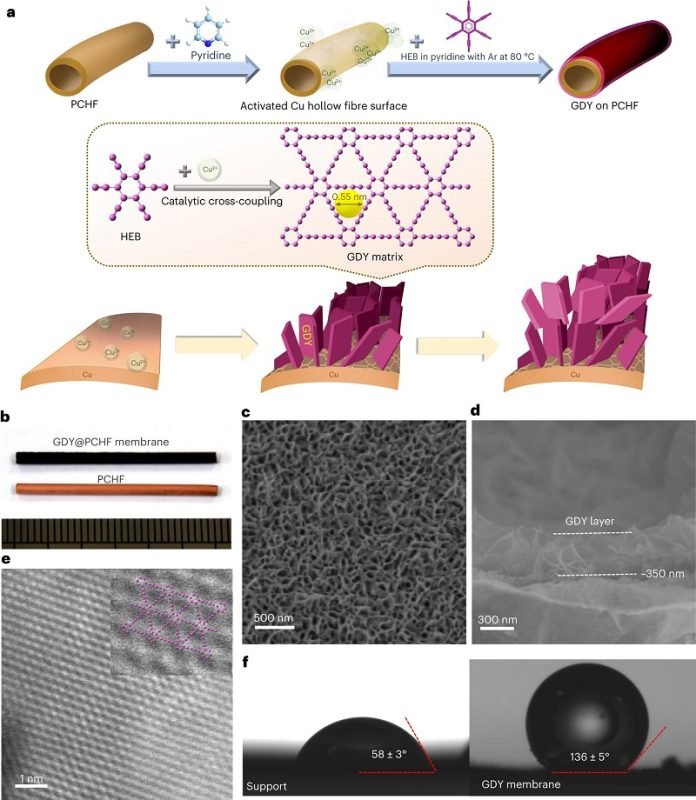
We all know that water is essential for life, but not everyone has enough clean water to use.
According to the United Nations, 2 to 3 billion people around the world are struggling because they don’t have enough water. One way to solve this is by turning sea water into clean, drinkable water.
This process is called seawater desalination, and it usually uses special filters, known as membranes, to remove the salt from the water.
But there’s a problem: most of these membranes are slow and not very efficient. They can get damaged easily and use up a lot of energy.
So, scientists have been trying to come up with better membranes that can clean more water faster and with less energy.
Good news! A team of researchers in China, led by Prof. Zeng Gaofeng and Prof. Shi Guosheng, has created a new kind of membrane that does just that.
They used a special material called graphdiyne to make these new filters. Their work was recently published in a scientific journal called Nature Water.
What’s Special about Graphdiyne?
Graphdiyne is a material made from carbon atoms arranged in a unique way. The researchers made the membranes by putting these atoms together in a special chemical reaction.
They made the membrane so thin and with tiny holes (nanopores) that it can filter water really fast but still block the salt.
How Good Is This New Membrane?
Very good, according to the scientists! These new graphdiyne membranes can remove almost 100% of the salt from the sea water. Even better, they can clean water much faster than the membranes we use today. The new membranes were not just a tiny bit better; they were dramatically better.
They could handle saltwater that was even saltier than normal sea water and water that had other pollutants.
How Does It Work?
In simple terms, the researchers found that this new membrane is so good at filtering because it lets through only water molecules and blocks everything else.
It’s like having an ultra-fast, ultra-smart bouncer at a club who only lets the good guys in and keeps all the bad guys out. This “bouncer” also works super fast, so a lot of “good guys” (clean water) get in quickly.
What’s Next?
This research doesn’t just help with making better membranes for cleaning sea water. The method they used to make these graphdiyne membranes could also be used to create other types of membranes.
These could be used in different industries for things like energy conversion or even in medical treatments.
So, this new membrane technology is a big deal. It could provide a faster, more efficient way to turn sea water into clean water.
That’s not just good news for the scientists who made it, but potentially life-changing for the billions of people who don’t have enough clean water. It’s like unlocking the ocean’s potential to help solve one of the world’s biggest problems.
The study was published in Nature Water.
Follow us on Twitter for more articles about this topic.



